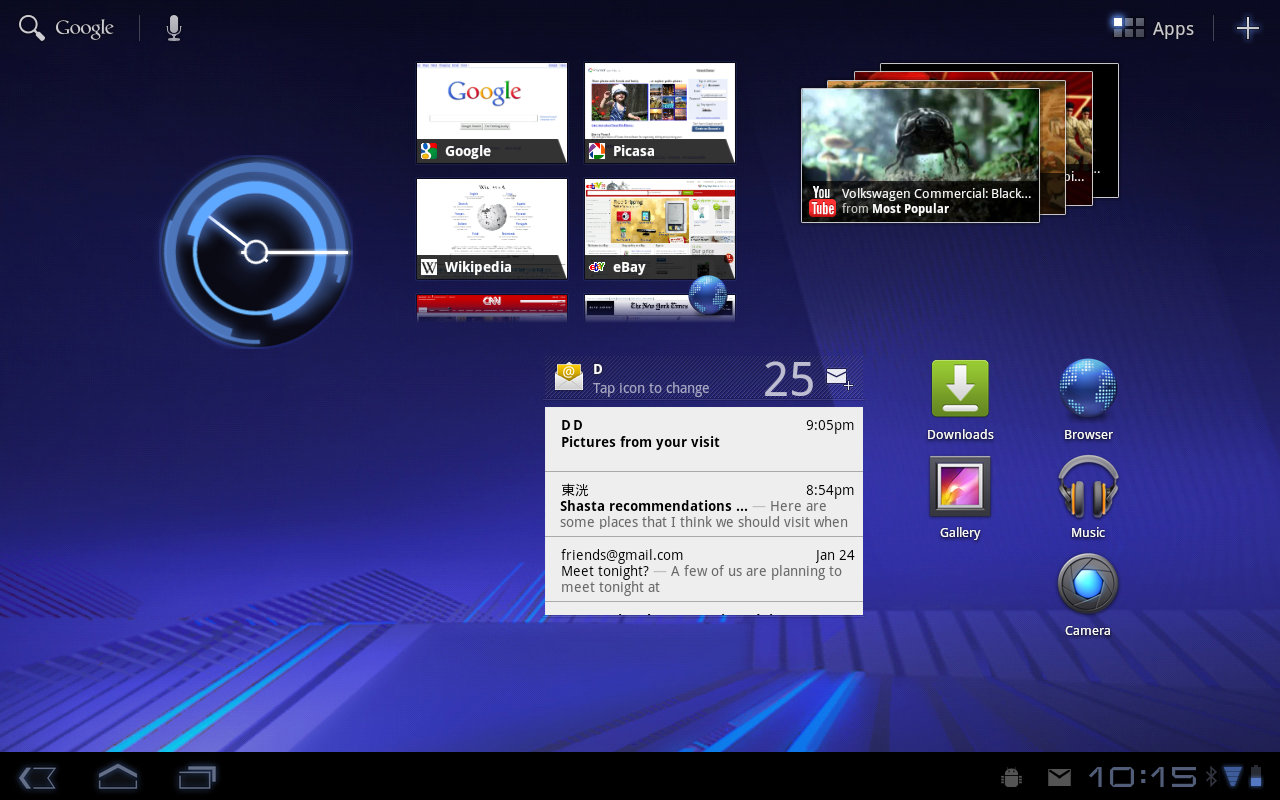Android Honeycamb Tablet
As we near the one-year anniversary of Honeycomb
tablets, you might assume that
Android 3.0 has led to a proliferation of devices and sales.
After all, considering it was written specifically with large displays
in mind, it was sure to revolutionize the tablet industry, right?
Well, not exactly. According to new data from ad network Chitika, Honeycomb only accounts for 1 percent of the Android usage on their system.
Based on data collected from hundreds of millions of ads served over the
span of a week, Chitika found that Gingerbread and Froyo still command
approximately 95 percent of the platform's market. What's more, Google's
own statistics
from the 14-day period ending December 1, 2011 show Honeycomb holding
just a 2.4 percent of Android's market share, still a very low figure.
What's to blame for such a low percentage? I suspect that there multiple reasons for the less-than-stellar adoption.
Specs vs. hardware
I've long felt that Android manufacturers place too much emphasis on
hardware components and the cutting-edge technology. Whether it's dual-core processors, cameras, or boatloads of memory, consumers are sold on what lies under the hood.
Apple, on the other hand, always has shown us what we can do with the hardware, even if it's less powerful. The
iPhone was not the first major smartphone to feature a front-facing camera,
even if Apple's commercials and marketing would have you believed that
the company pioneered the technology. I suspect that the same thing has
happened on the tablet front; there's simply too much focus on expensive
hardware.
I could talk all day about how incredible the Transformer Prime is on paper, but many consumers just don't want to spend that kind of money unless they see value in what it can do for them.
Perhaps that's one of the reasons that the Kindle Fire and Nook Tablet
stand to be successful. Sure, there is that all-too-tempting price
point to help things along, but I believe it has more to do with focus
on experience.
Both should sell like hotcakes this holiday season based around inexpensive alternatives to the iPad 2 that offer a lot of cool features. Apps? Check. Internet? Check. E-mail, books, calendar, and music? You bet.
Pay attention to the television commercials over the next few weeks and
watch how these devices are marketed. It won't be the hardware, but what
you can do instead.
Android Honeycamb Tablet

Android Honeycamb Tablet

Android Honeycamb Tablet

Android Honeycamb Tablet

Android Honeycamb Tablet

Android Honeycamb Tablet
Android Honeycamb Tablet

Android Honeycamb Tablet

Thanks for the amazing content on your blog I am very interested in this article and you have really helped me.
ReplyDeleteDell laptops